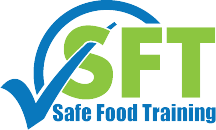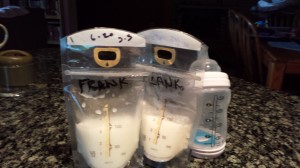Important Safety Procedures to Use when Handling Breast Milk
During almost every food safety certification class we administer in the Minneapolis / St. Paul MN area, we get questions about proper handling and preparation of breast milk. That’s not surprising, as thanks to advocacy from the USDA and grassroots organizations like the US Breastfeeding Committee, there is growing public awareness of the benefits of breast milk, which include a higher IQ and stronger immune system. Scientists now know that mom passes on her antibodies to baby through breast milk, and the result is a lower risk of developing infectious illnesses as well as chronic diseases like early onset diabetes, obesity, Crohn’s disease, ulcerative colitis, Hodgkin’s disease and childhood leukemia.
A recent report from the Center for Disease Control (CDC) shows that the rate of breastfeeding nationwide has increased over 10% from 2000 to 2010 and continues to be on the rise, with 77% of infant’s breastfeeding from birth in 2013. The CDC cites that this rise is due not only to decisions by individual families but also thanks to the cooperation of health care professionals, business owners and community members.
The following guidelines explain how to safely handle and prepare breast milk for your customers.
Maintaining a Hygienic Environment
- Be sure to wash your hands with soap and warm water before handling breast milk.
- Clean re-usable breast milk containers and other serving equipment after each use in hot soapy water.
- Sterilize bottles and equipment by boiling them in water for at least ten seconds. Handle with tongs and allow equipment to air dry completely before the next use.
- Clean tables and other eating areas with soap and hot water.
Handling Breast Milk Safely
- Collect breast milk in sterile containers and refrigerate immediately.
- If you don’t intend to use the breast milk within the next 48 hours, freeze it immediately and label the container with the date. Breast milk can be safely stored for three to six months.
- To thaw frozen breast milk place the waterproof container in warm water to maintain the enzymes and nutrients in the milk. After thawing, shake the container to return the breast milk to a homogeneous state.
- Only freeze breast milk once. It cannot be refrozen.
- Any breast milk left over from a meal should be discarded.
- Breast milk that has been unrefrigerated for two hours or longer should be discarded.
Important Times and Temperatures to Know for Storing Breast Milk Safely
- Breast milk can be stored in the refrigerator (39°F or 4°C) for up to five days.
- If stored in the freezer compartment located within the refrigerator (5°F or -15°C) breast milk can be stored for up to two weeks.
- Breast milk stored in the freezer of a typical refrigerator (0°F or -18°C) can be stored for three to six months.
- Breast milk may be stored in deep freezers (-4°F or -20°C) for up to 12 months, but longer storage times will result in a lower quality milk.
Find out more about breast milk handling and other issues relevant to food safety certification in MN by attending a Safe Food Training Course at one of the several convenient Minneapolis / St. Paul locations.



